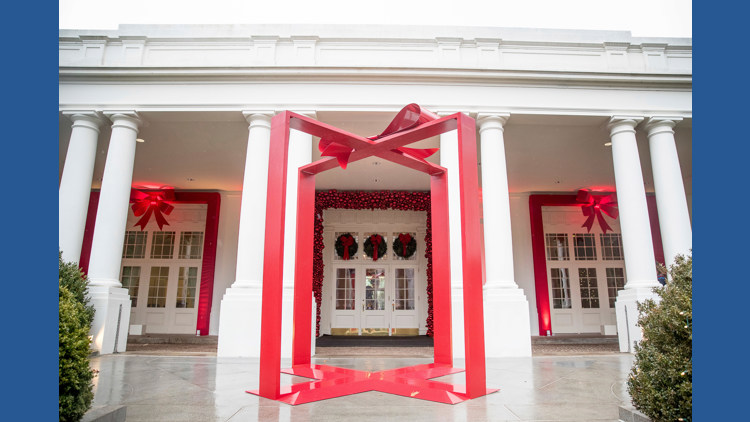World
White House East Wing Demolished: A Look at Its Legacy

The East Wing of the White House has been demolished as part of a major renovation project. This significant change marks the end of a historic era for a structure that served as a backdrop to countless moments in American history. From its inception in 1902 during the presidency of Theodore Roosevelt to its recent role as a center for first lady initiatives, the East Wing has played a crucial part in the nation’s political and cultural landscape.
The East Wing was often referred to as the “heart” of the White House, a sentiment echoed by former First Lady Betty Ford, who famously stated that while the West Wing is the “mind” of the nation, the East Wing represents its emotional core. This perspective highlights the importance of the East Wing not only as a physical structure but also as a symbol of the American spirit.
Historical Significance of the East Wing
Constructed primarily to accommodate the growing needs of the presidential family and staff, the East Wing has been home to several first ladies, including Jacqueline Kennedy and Michelle Obama. Each of these women used the space to launch significant initiatives impacting American society. The East Wing notably housed the famous East Garden, designed by Lady Bird Johnson, which became a tranquil retreat amid the bustling activities of the White House.
In addition to its role as a private space for the first family, the East Wing was also a venue for public events. It hosted various art exhibitions and events aimed at promoting the arts, often in collaboration with the National Gallery of Art. This commitment to culture and community engagement underscored the East Wing’s importance beyond its administrative functions.
Future Plans for the Renovation
The decision to demolish the East Wing is part of a broader renovation project aimed at modernizing the White House complex. The renovation is expected to include state-of-the-art facilities while preserving the historical essence of the building. The timeline for completion has not been publicly disclosed, but officials anticipate that the newly designed East Wing will continue to serve as a central hub for the first family and the administration.
While some may mourn the loss of the East Wing, others see this as an opportunity to enhance a structure that has seen significant changes throughout its history. The renovation aims to blend modern functionality with the historical integrity that has characterized the White House for over a century.
The East Wing’s legacy will undoubtedly influence the design and purpose of its replacement. As the White House moves forward, it is essential to remember the moments that took place within its walls and the impact these events had on the American public. The new East Wing will strive to uphold the spirit of its predecessor while adapting to the needs of a contemporary presidency.
In conclusion, the demolition of the East Wing signifies not just the loss of a physical structure but also the end of an era rich in history and cultural significance. As plans unfold for its replacement, the memories and legacies associated with the East Wing will continue to shape the narrative of the White House for years to come.
-

 Lifestyle3 months ago
Lifestyle3 months agoLibraries Challenge Rising E-Book Costs Amid Growing Demand
-

 Sports3 months ago
Sports3 months agoTyreek Hill Responds to Tua Tagovailoa’s Comments on Team Dynamics
-

 Sports3 months ago
Sports3 months agoLiverpool Secures Agreement to Sign Young Striker Will Wright
-

 Lifestyle3 months ago
Lifestyle3 months agoSave Your Split Tomatoes: Expert Tips for Gardeners
-

 Lifestyle3 months ago
Lifestyle3 months agoPrincess Beatrice’s Daughter Athena Joins Siblings at London Parade
-

 World3 months ago
World3 months agoWinter Storms Lash New South Wales with Snow, Flood Risks
-

 Science3 months ago
Science3 months agoTrump Administration Moves to Repeal Key Climate Regulation
-

 Business3 months ago
Business3 months agoSoFi Technologies Shares Slip 2% Following Insider Stock Sale
-

 Science2 months ago
Science2 months agoSan Francisco Hosts Unique Contest to Identify “Performative Males”
-

 Science3 months ago
Science3 months agoNew Tool Reveals Link Between Horse Coat Condition and Parasites
-

 Sports3 months ago
Sports3 months agoElon Musk Sculpture Travels From Utah to Yosemite National Park
-

 Science3 months ago
Science3 months agoNew Study Confirms Humans Transported Stonehenge Bluestones









